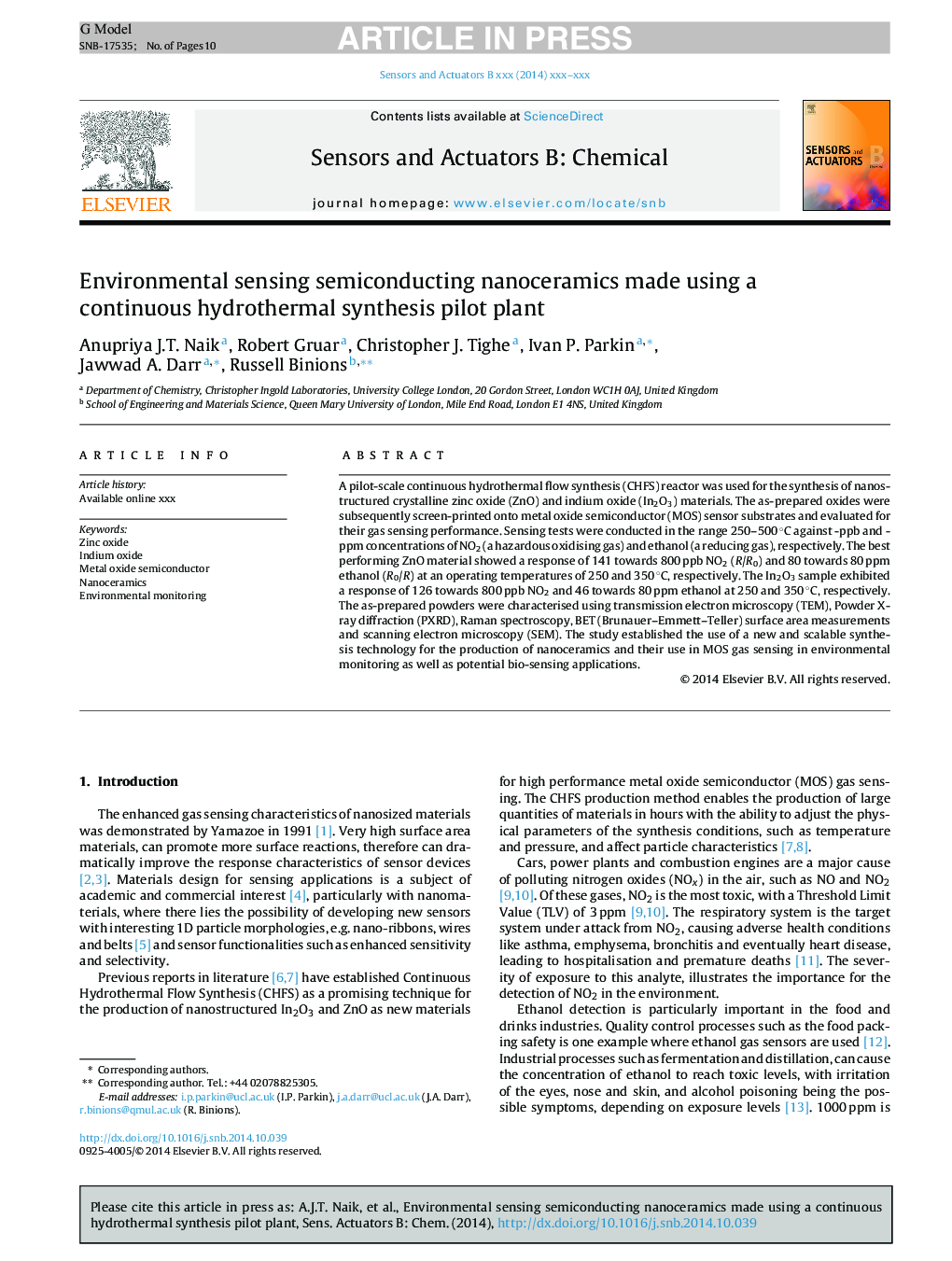| Article ID | Journal | Published Year | Pages | File Type |
|---|---|---|---|---|
| 7145717 | Sensors and Actuators B: Chemical | 2015 | 10 Pages |
Abstract
A pilot-scale continuous hydrothermal flow synthesis (CHFS) reactor was used for the synthesis of nanostructured crystalline zinc oxide (ZnO) and indium oxide (In2O3) materials. The as-prepared oxides were subsequently screen-printed onto metal oxide semiconductor (MOS) sensor substrates and evaluated for their gas sensing performance. Sensing tests were conducted in the range 250-500 °C against -ppb and -ppm concentrations of NO2 (a hazardous oxidising gas) and ethanol (a reducing gas), respectively. The best performing ZnO material showed a response of 141 towards 800 ppb NO2 (R/R0) and 80 towards 80 ppm ethanol (R0/R) at an operating temperatures of 250 and 350 °C, respectively. The In2O3 sample exhibited a response of 126 towards 800 ppb NO2 and 46 towards 80 ppm ethanol at 250 and 350 °C, respectively. The as-prepared powders were characterised using transmission electron microscopy (TEM), Powder X-ray diffraction (PXRD), Raman spectroscopy, BET (Brunauer-Emmett-Teller) surface area measurements and scanning electron microscopy (SEM). The study established the use of a new and scalable synthesis technology for the production of nanoceramics and their use in MOS gas sensing in environmental monitoring as well as potential bio-sensing applications.
Related Topics
Physical Sciences and Engineering
Chemistry
Analytical Chemistry
Authors
Anupriya J.T. Naik, Robert Gruar, Christopher J. Tighe, Ivan P. Parkin, Jawwad A. Darr, Russell Binions,
